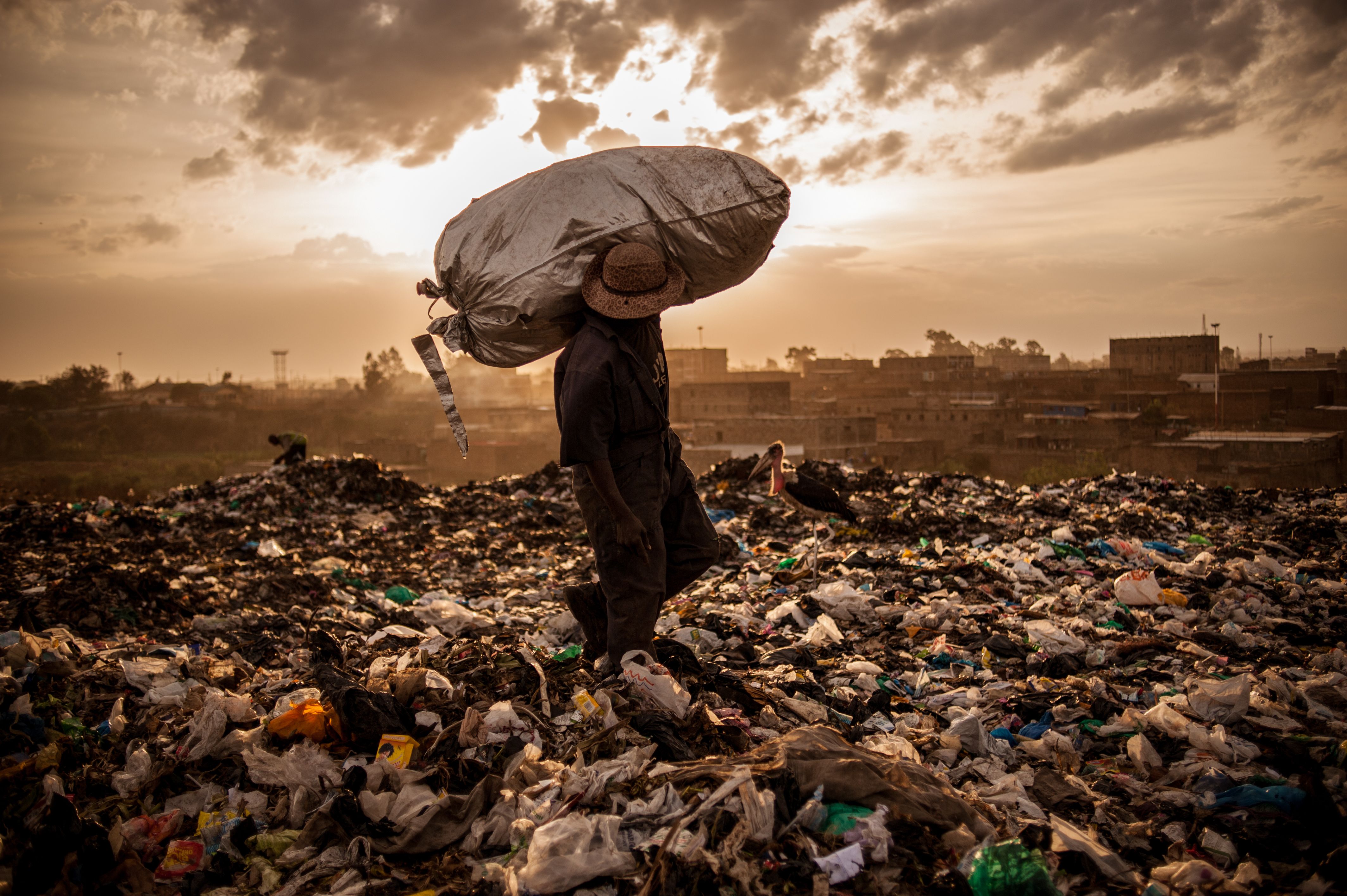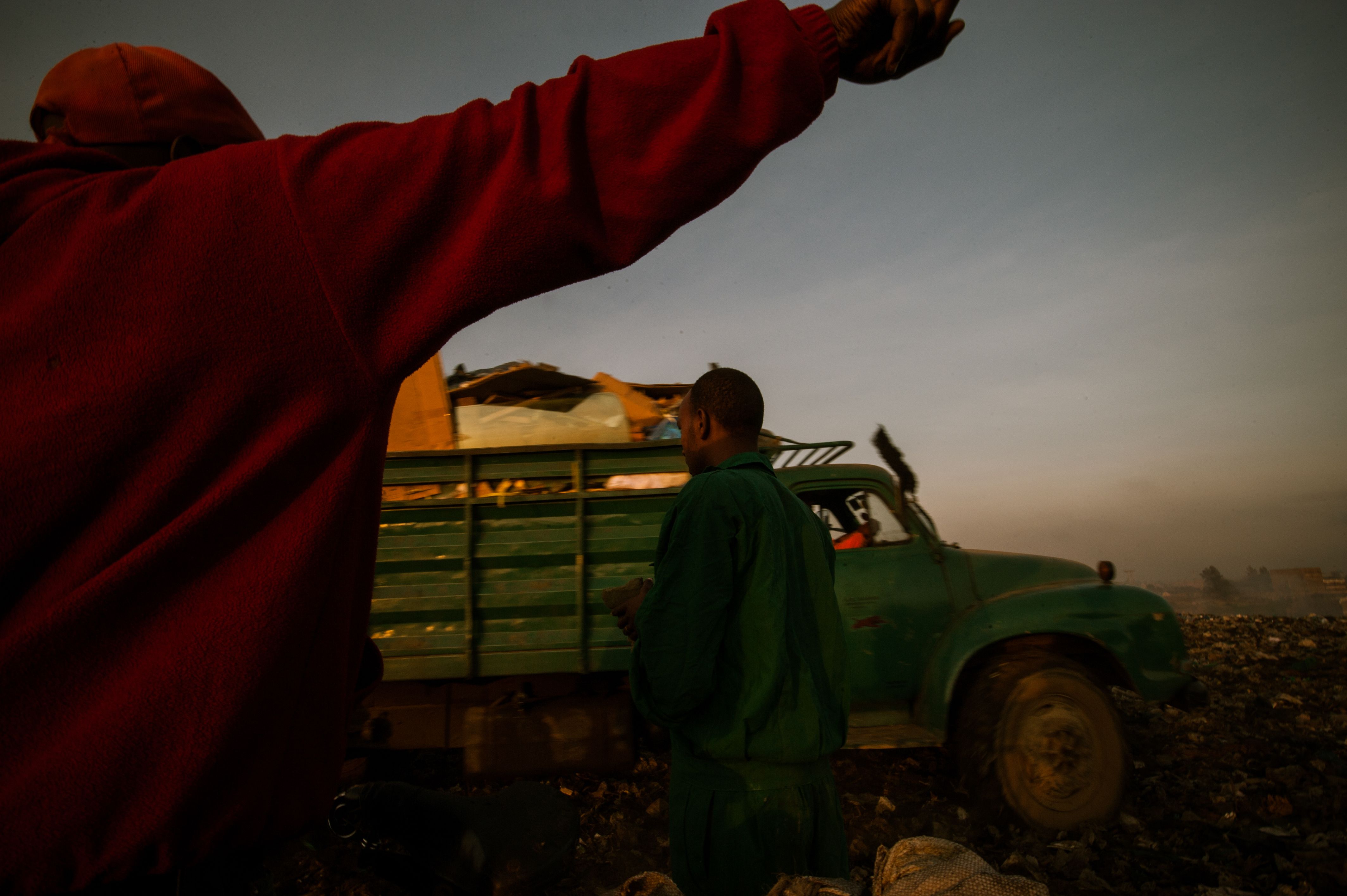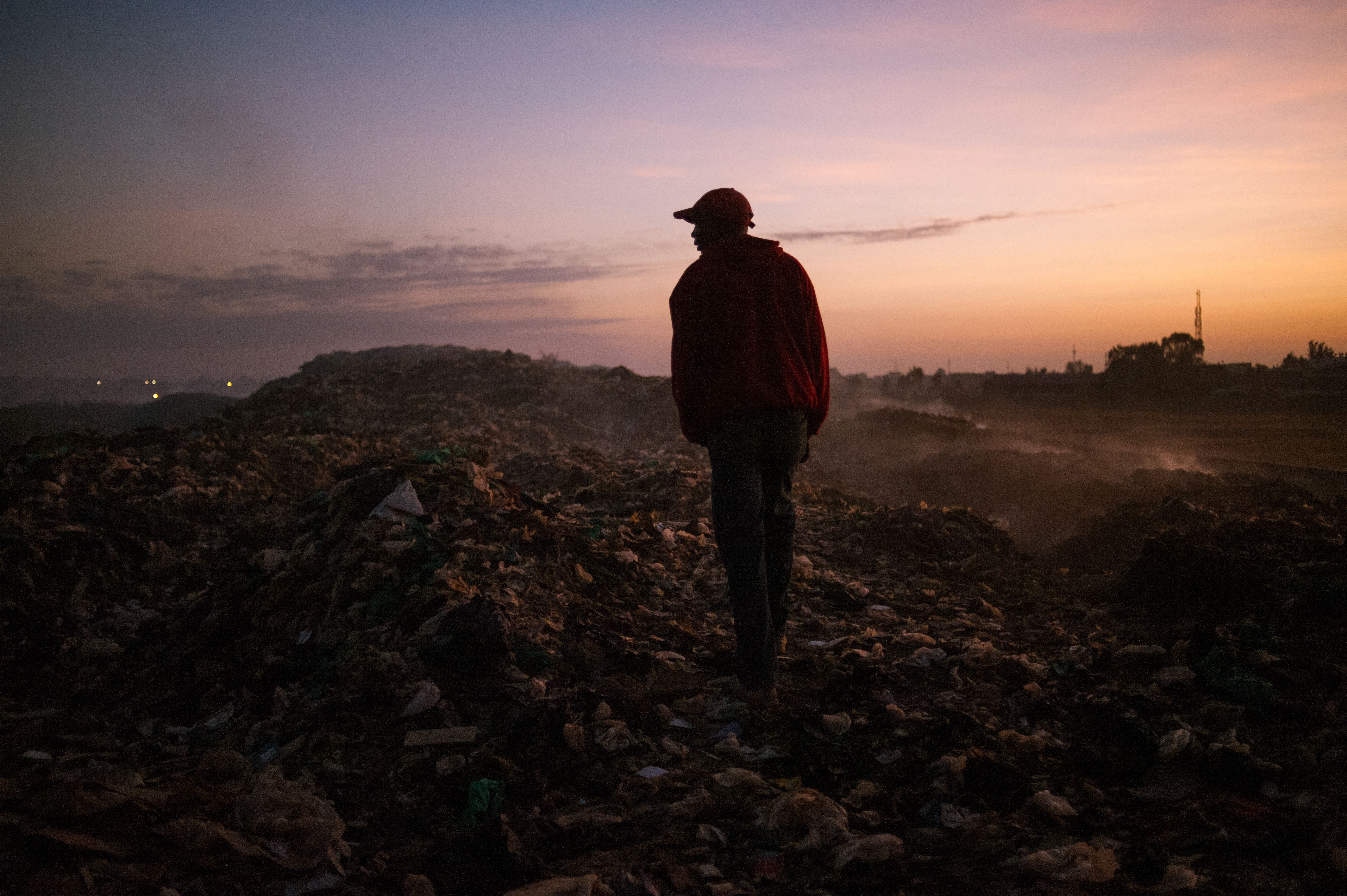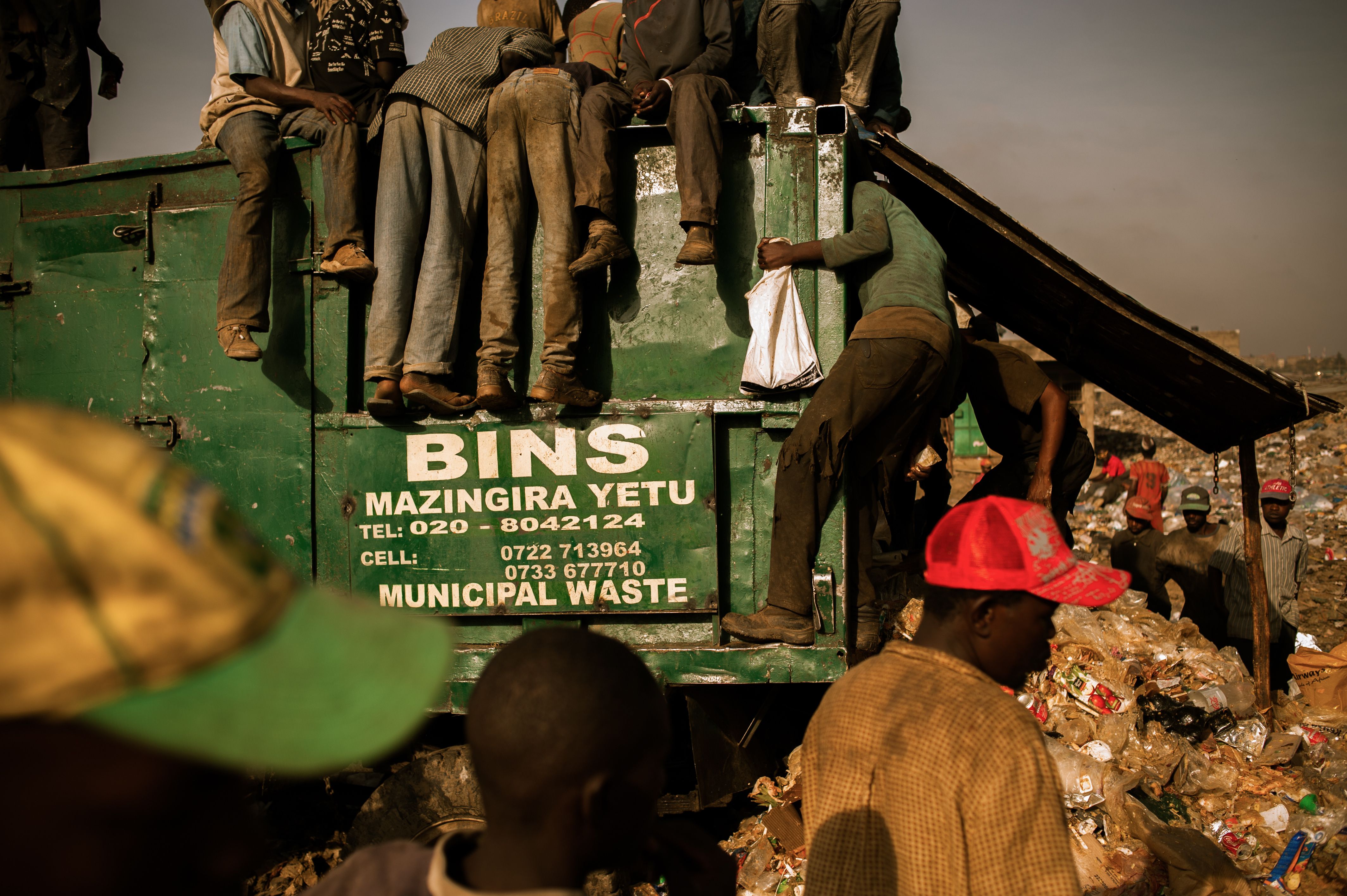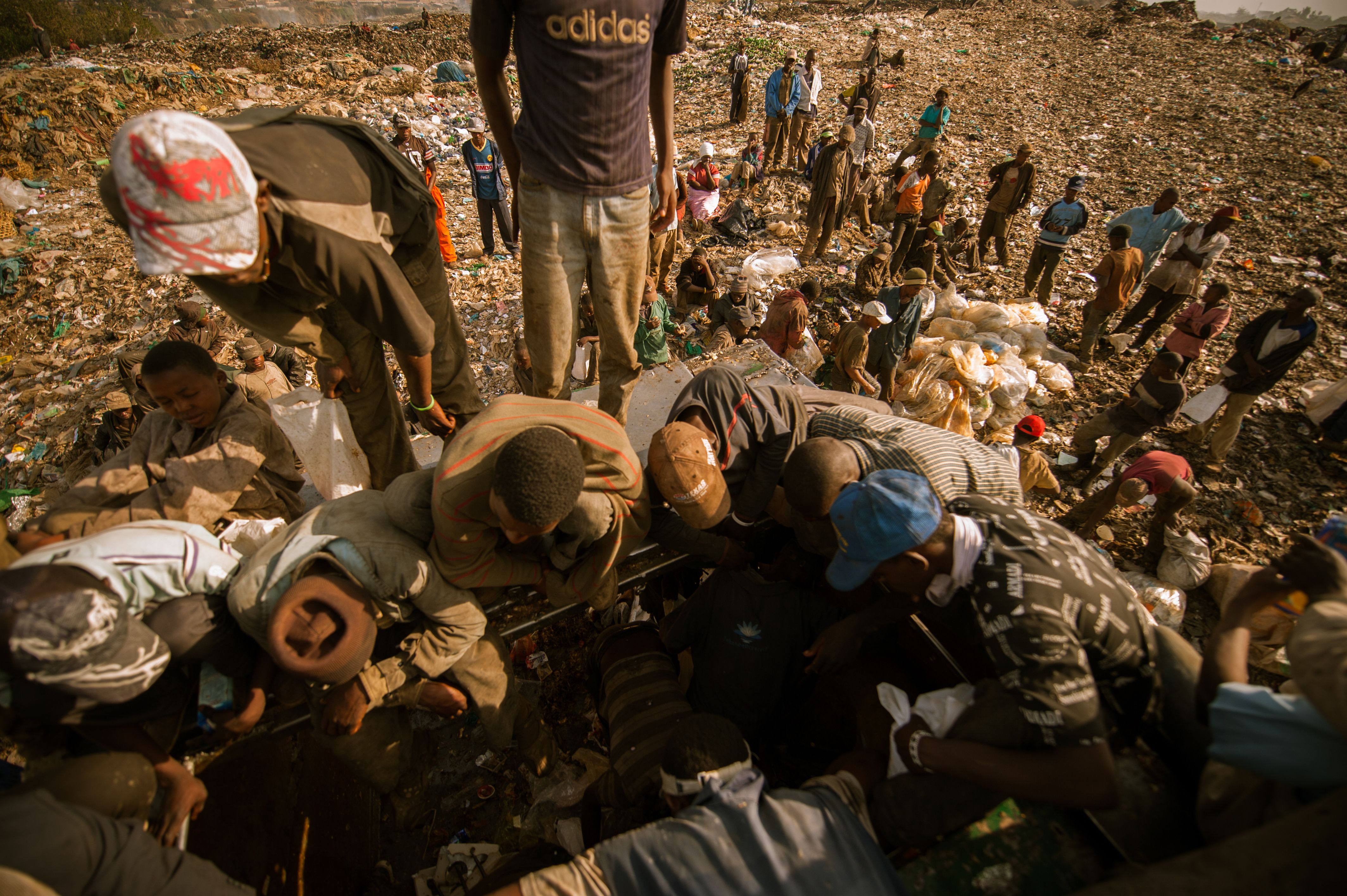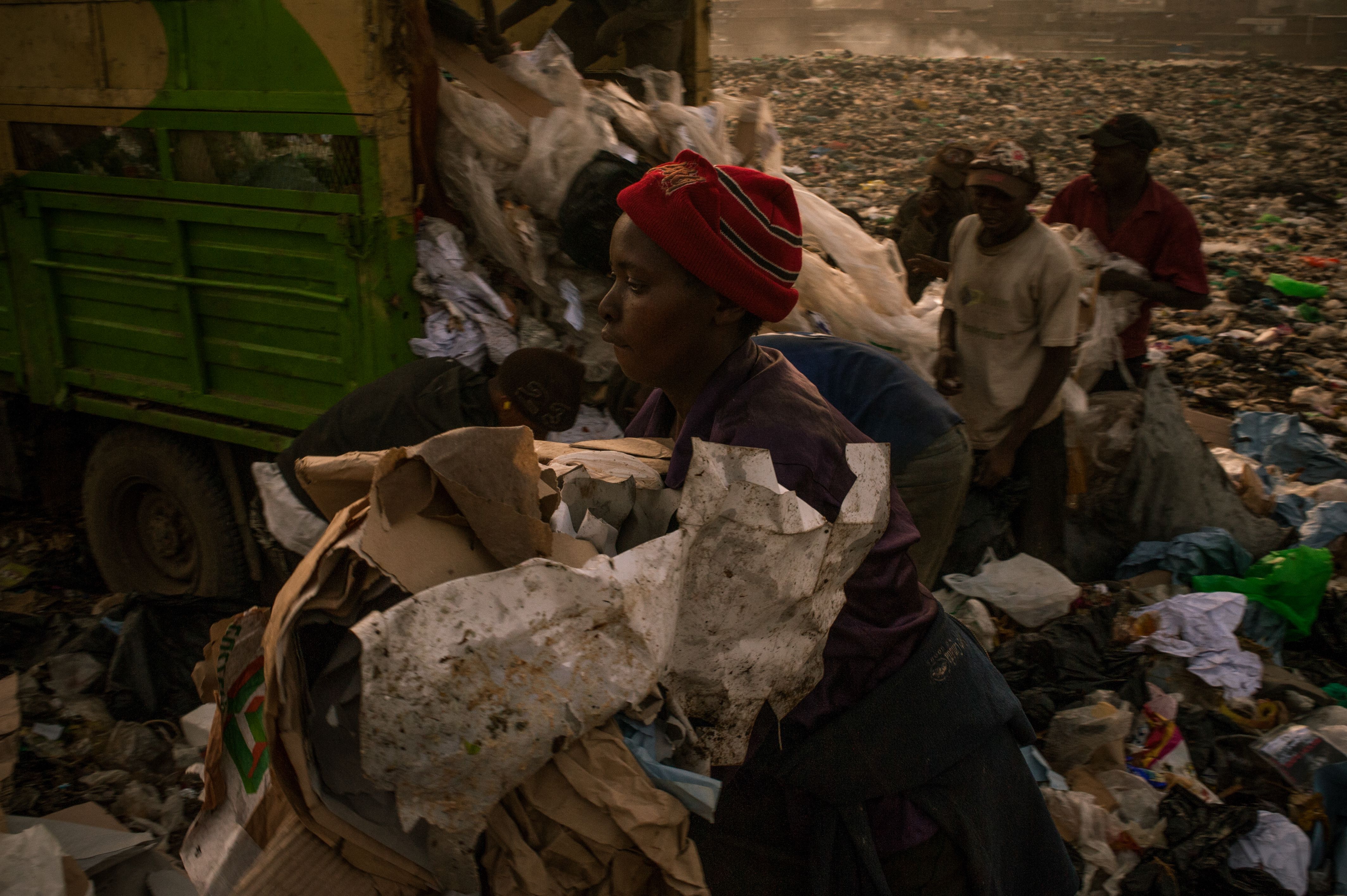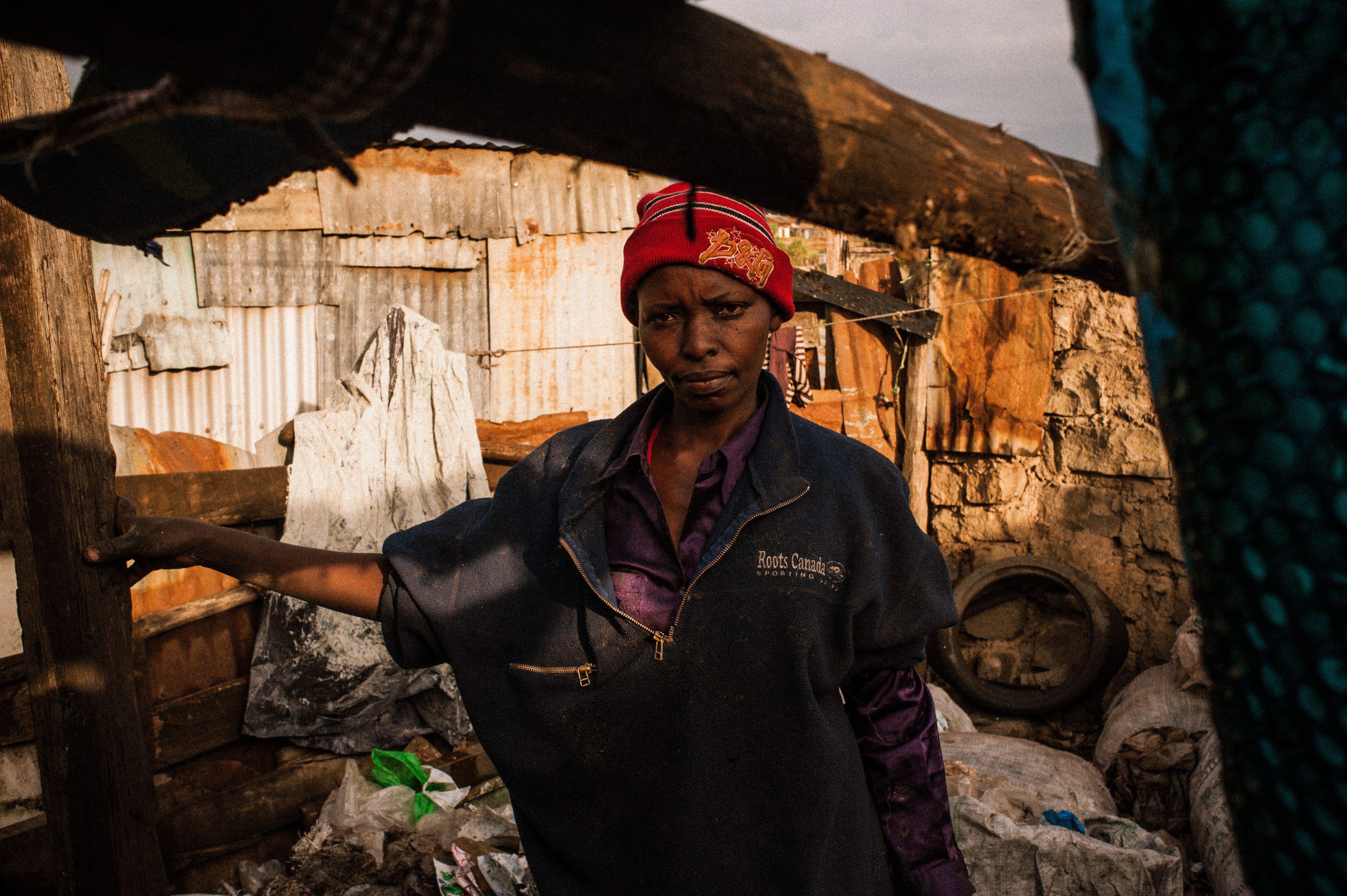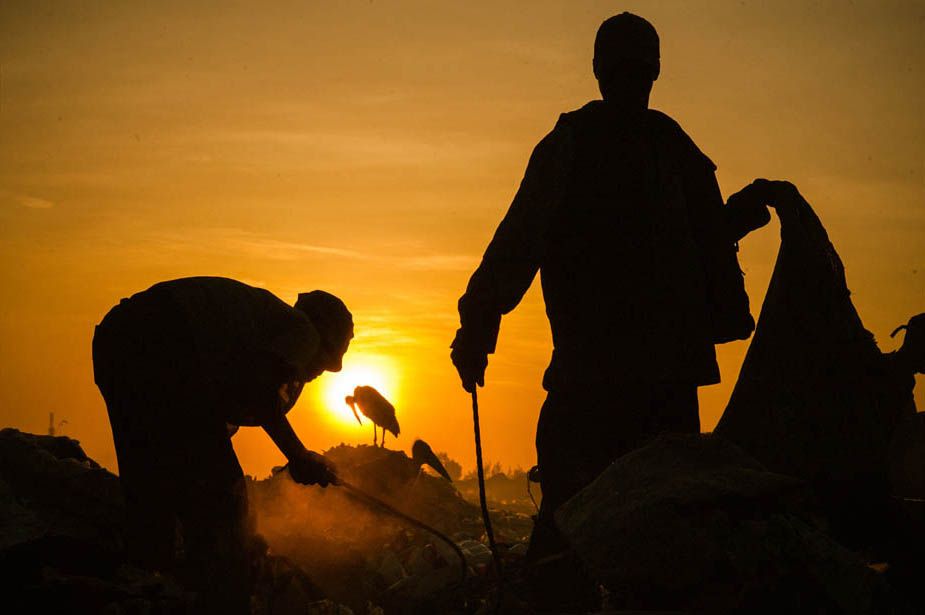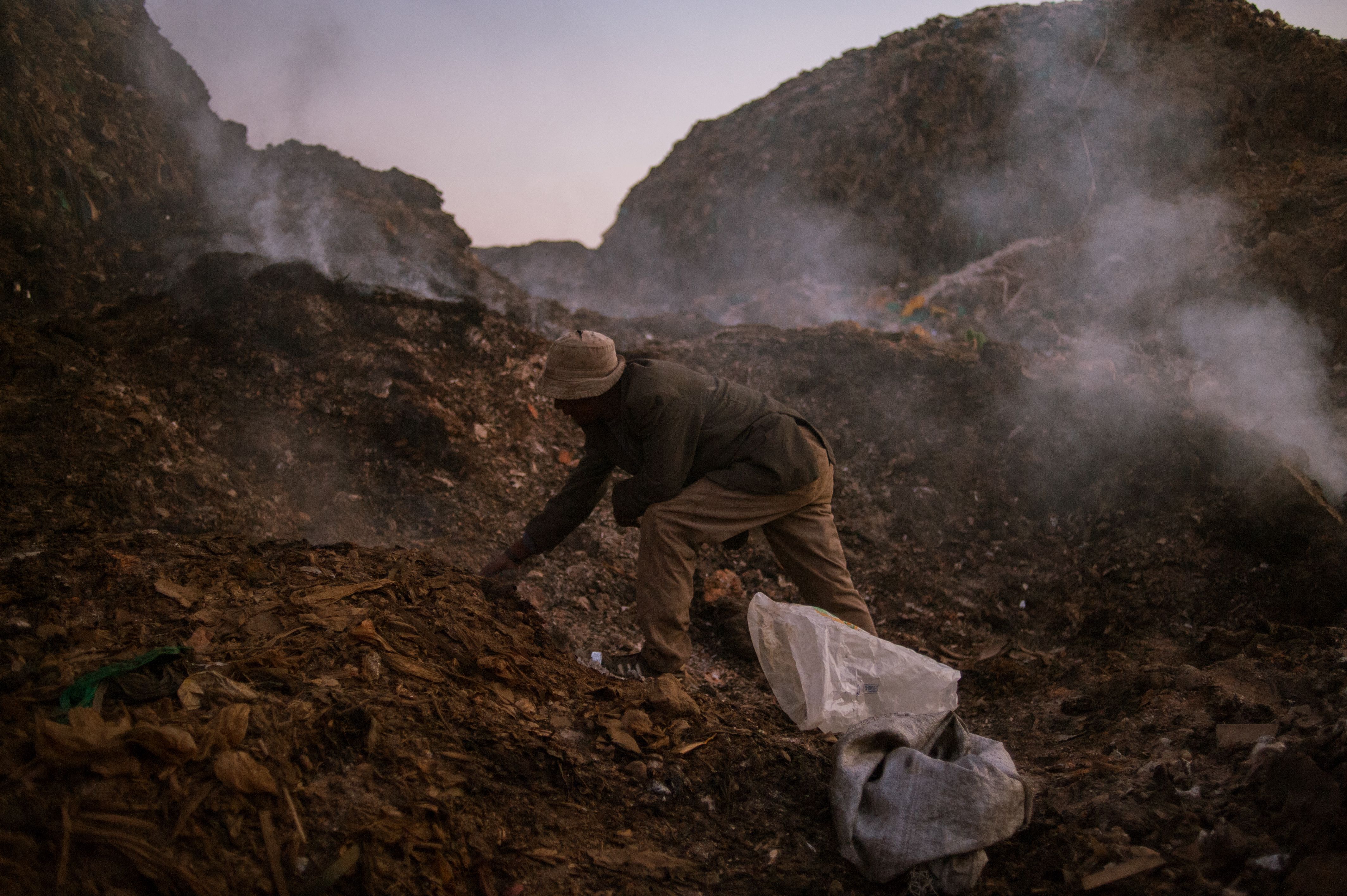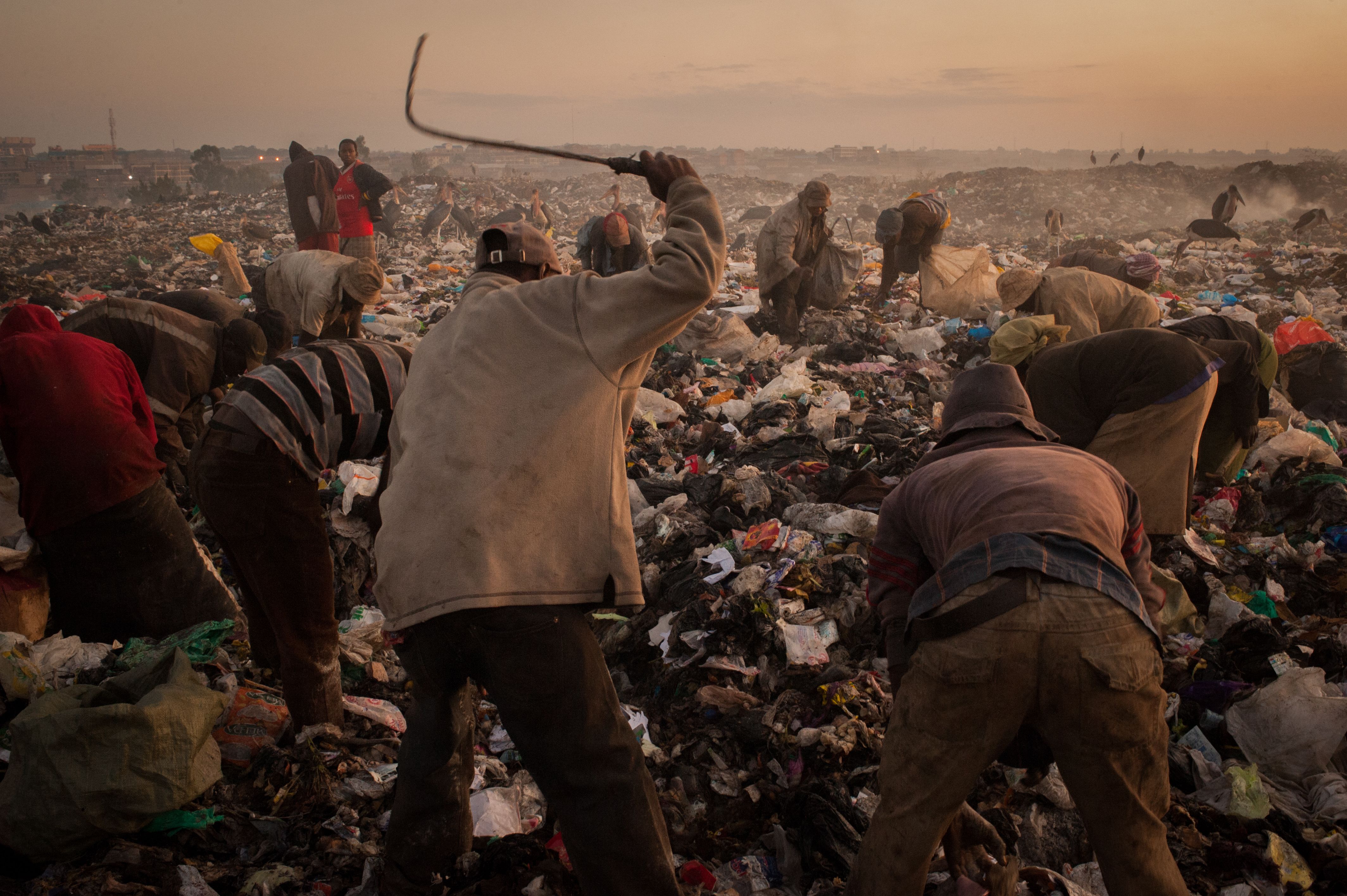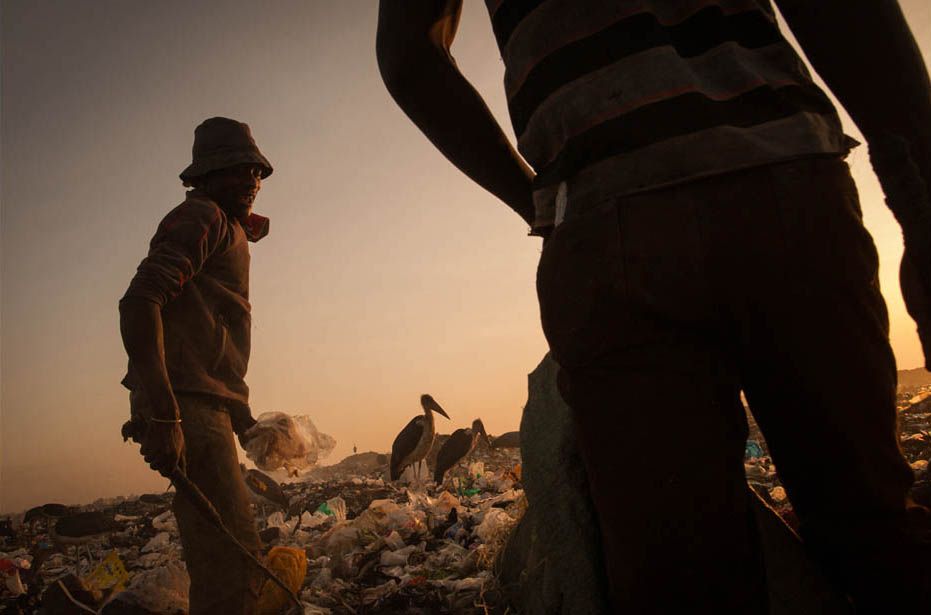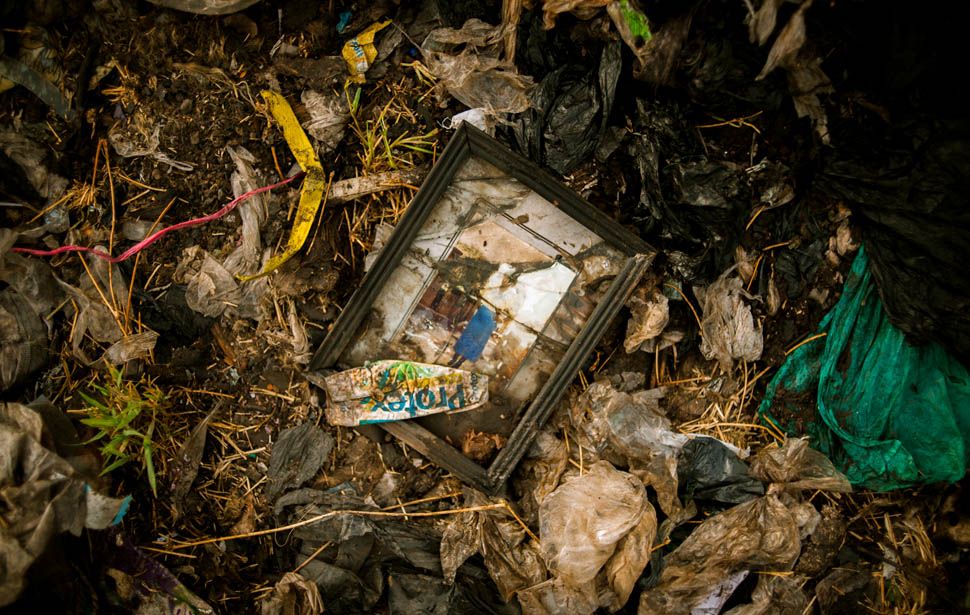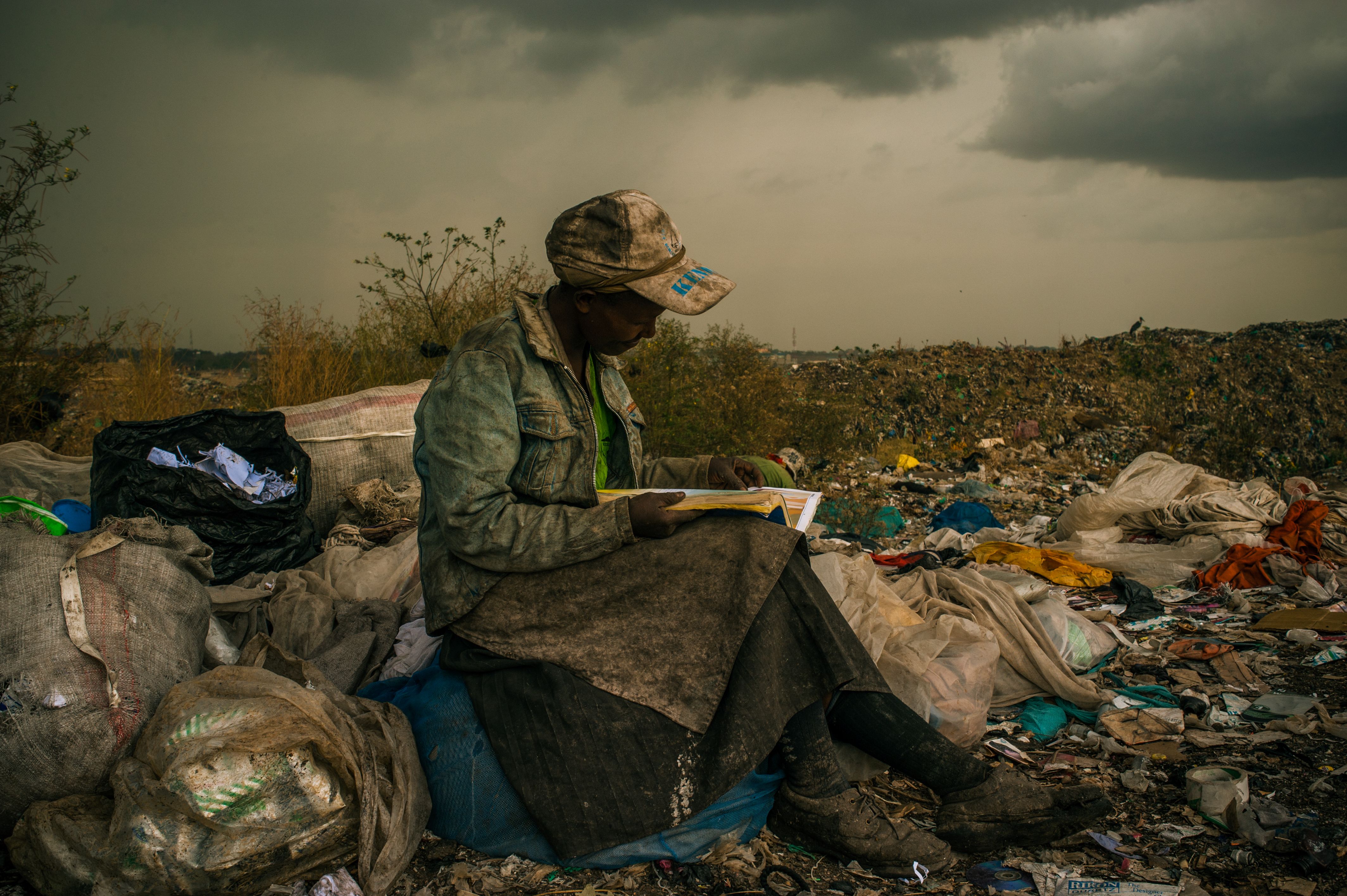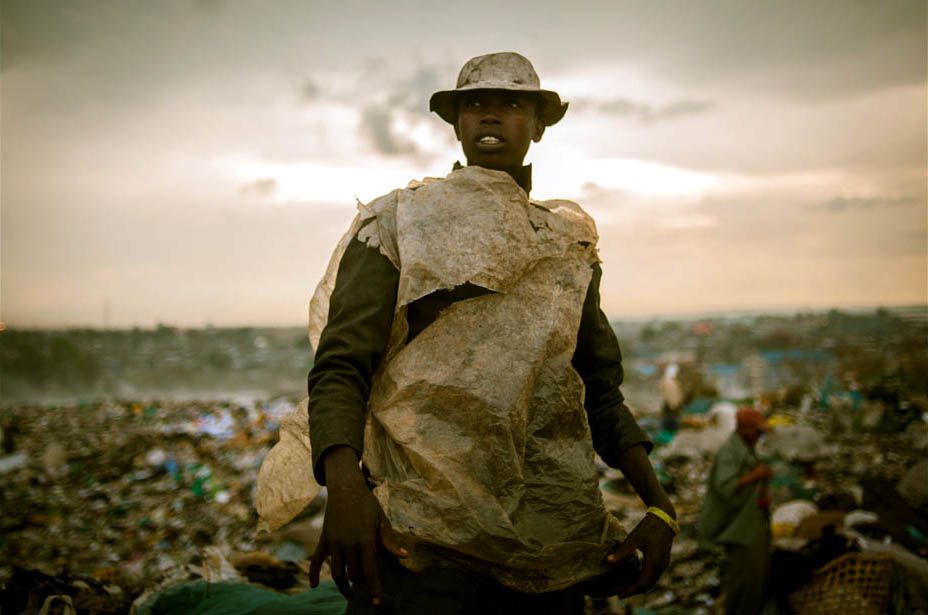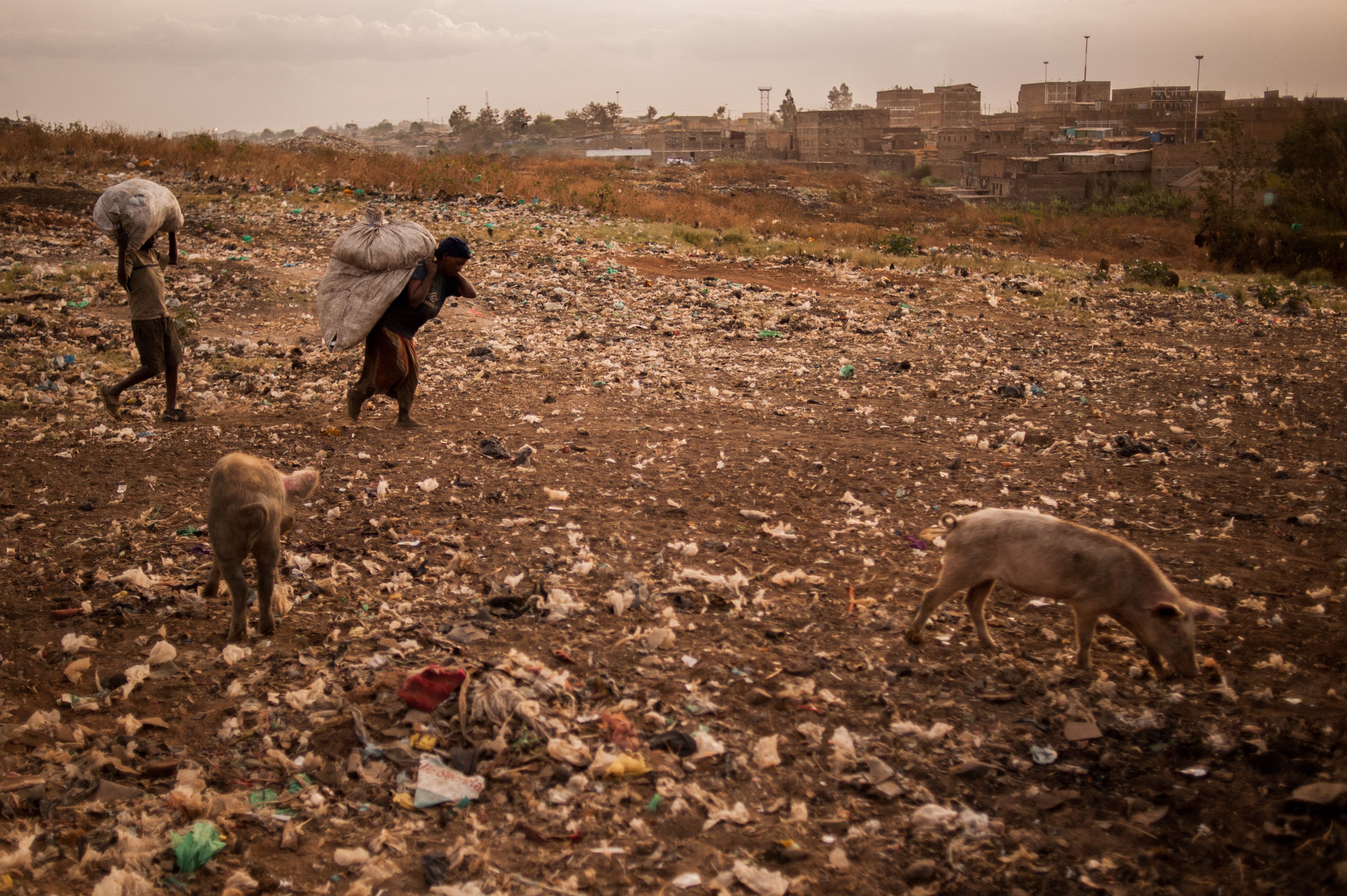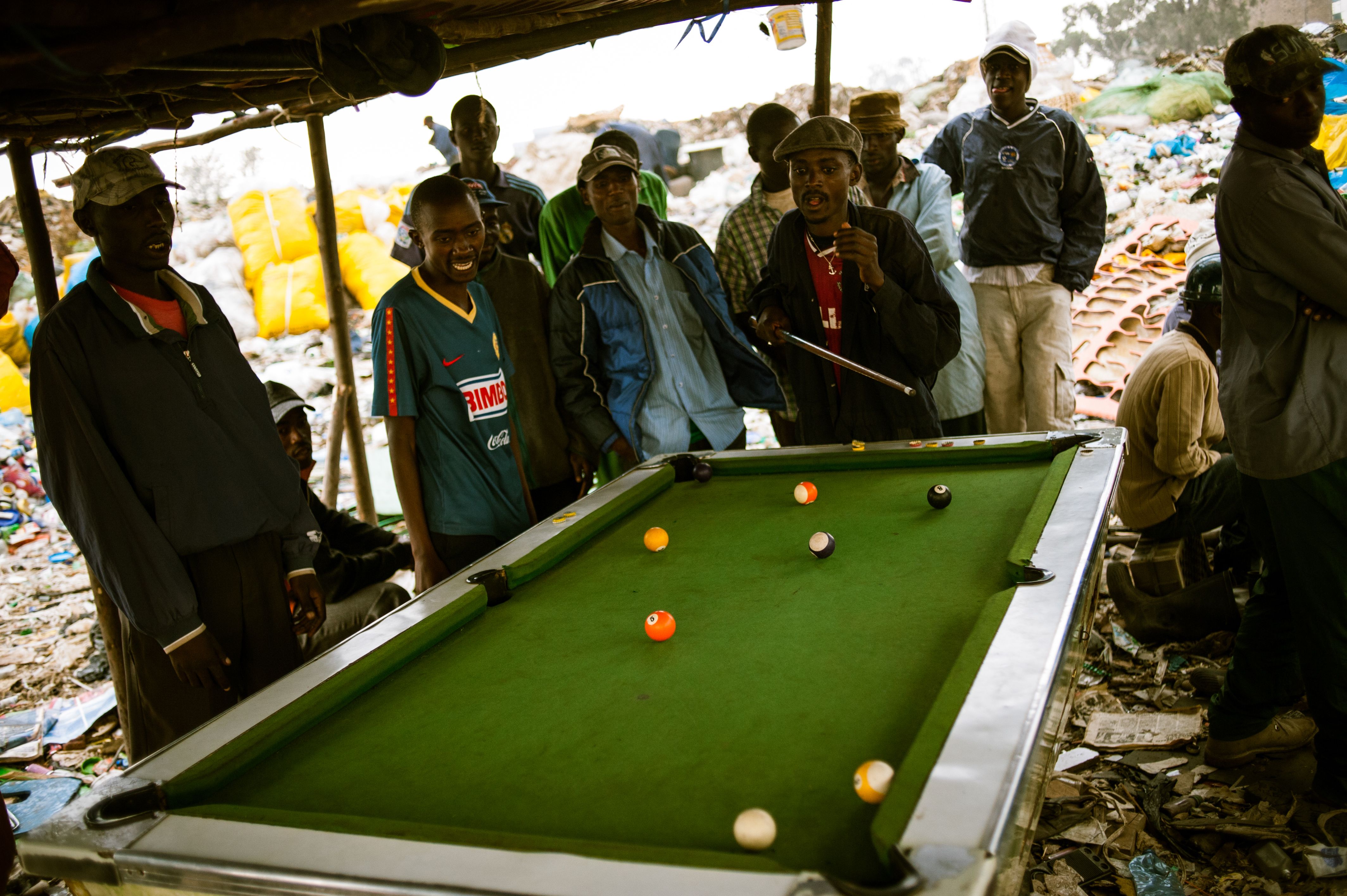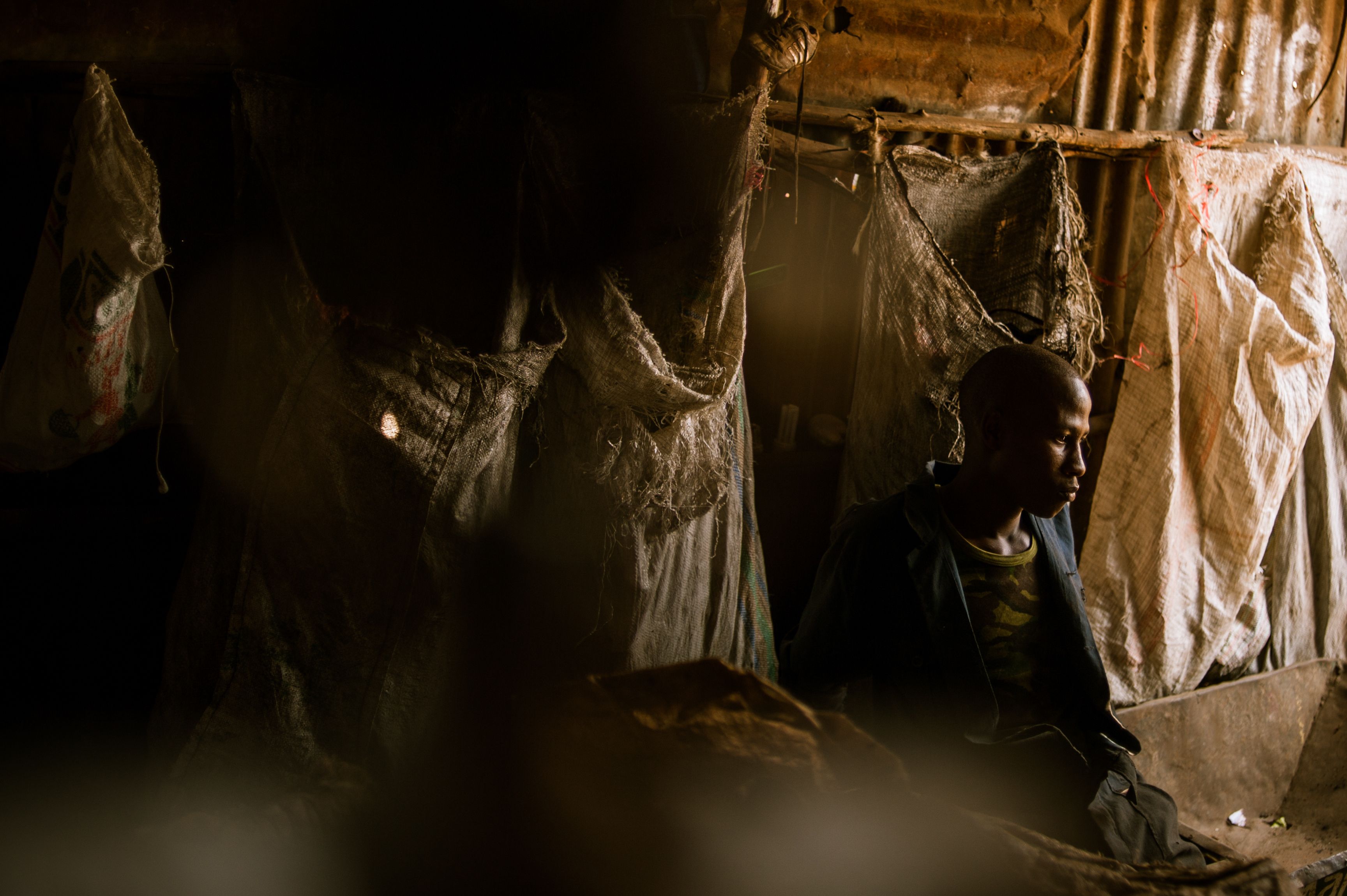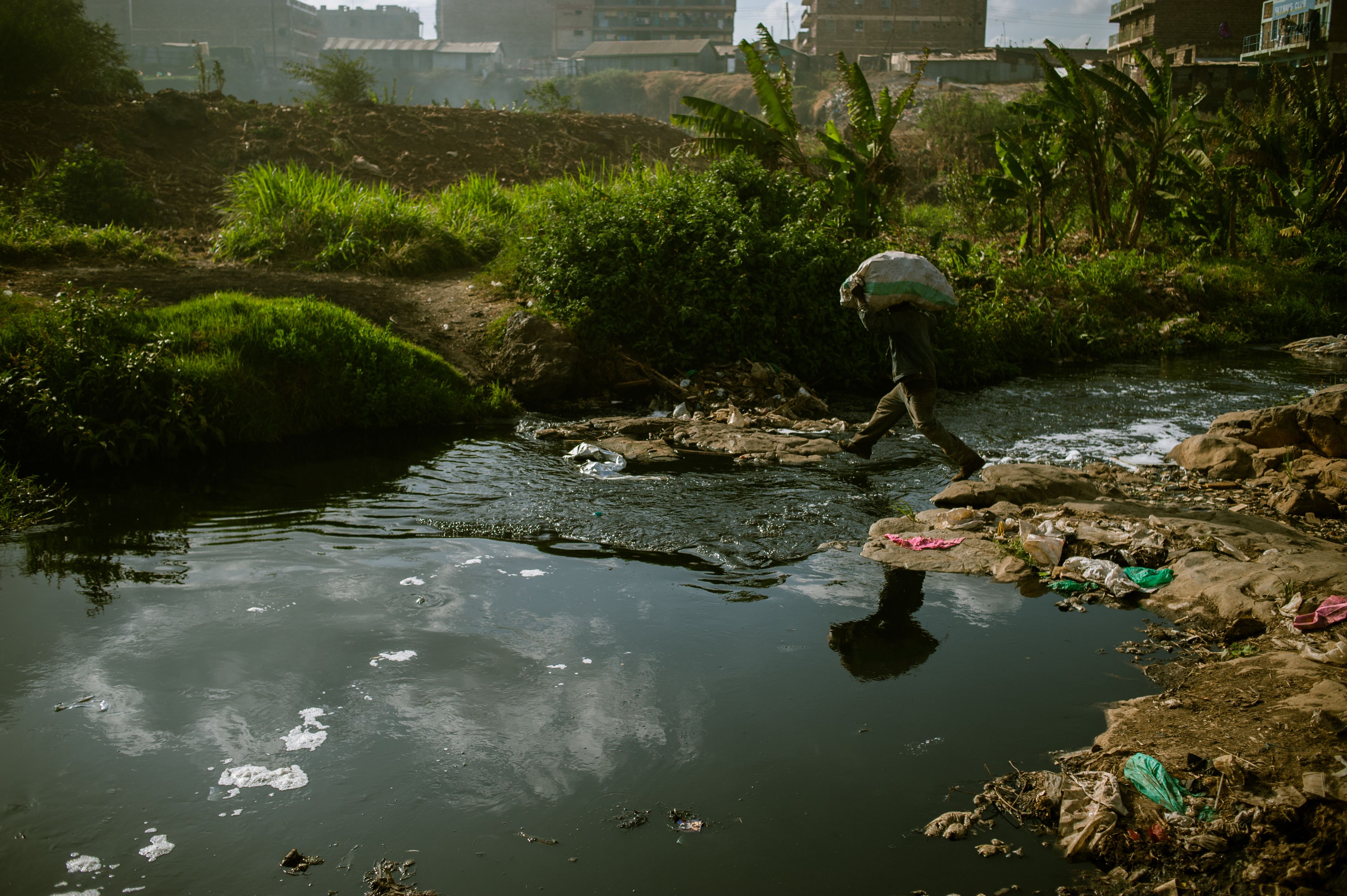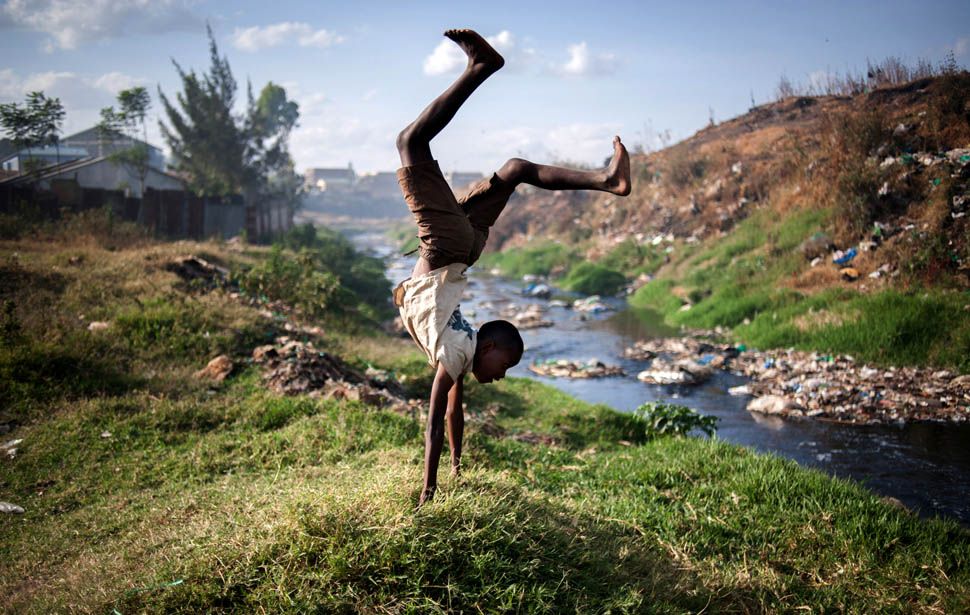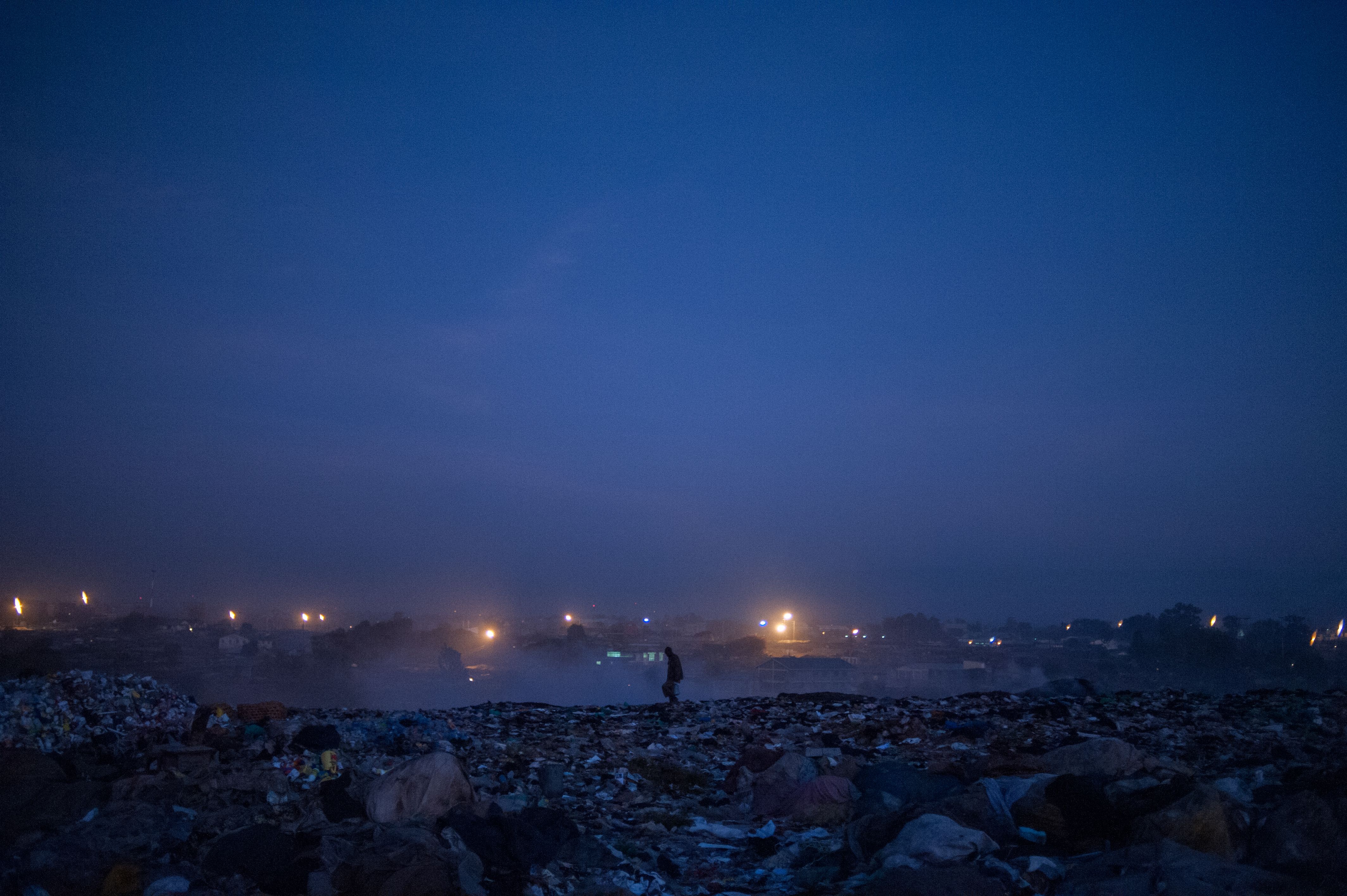Kenya’s Dandora Municipal Dump Site is the only dumping location for waste in Nairobi, East Africa’s most populous city, and serves as a provocative starting point for understanding the growing health, poverty and sanitation problems facing the rapidly expanding capital and region.
Located about 2.5 miles from the central business district, the 30-acre Dandora site literally spills into the households of nearly 1 million people living in nearby slums.
Through a narrative of survival amid tragic health and environmental consequences, these photos explore a marginalized population long overshadowed by an industrializing city’s expansion
Behind the statistics of children with respiratory ailments, toxic blood lead levels, skin disorders and fatal diseases directly attributed to the waste are stories of communities that have grown to depend on the dump, from street children who live off the money they make selling food and other items they find in its piles to residents who are paid pennies a day by private cartels to sort and recycle the waste.
The country’s leadership has long shown alarming indifference to Dandora, ignoring environmental laws, U.N.-commissioned health studies and calls for closure from human rights groups. A contested process to decommission the site was canceled in February.
